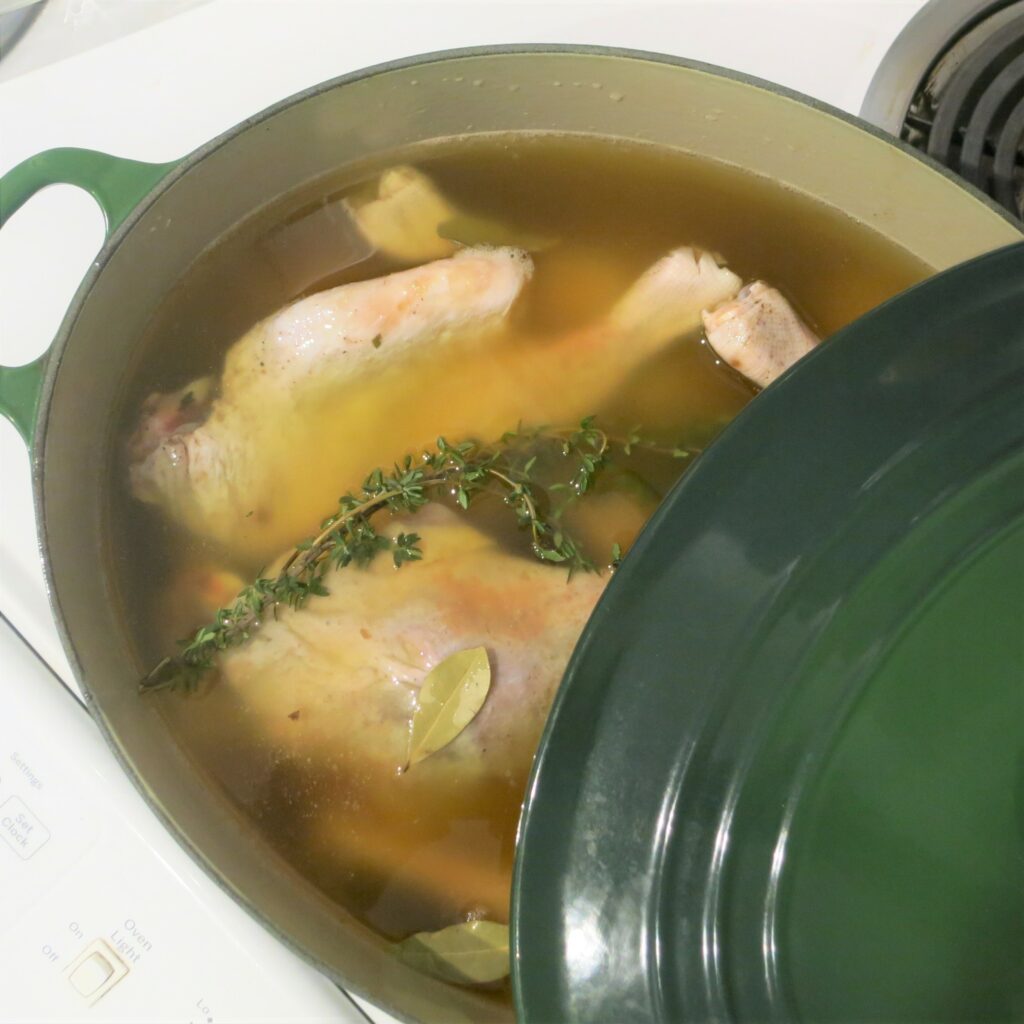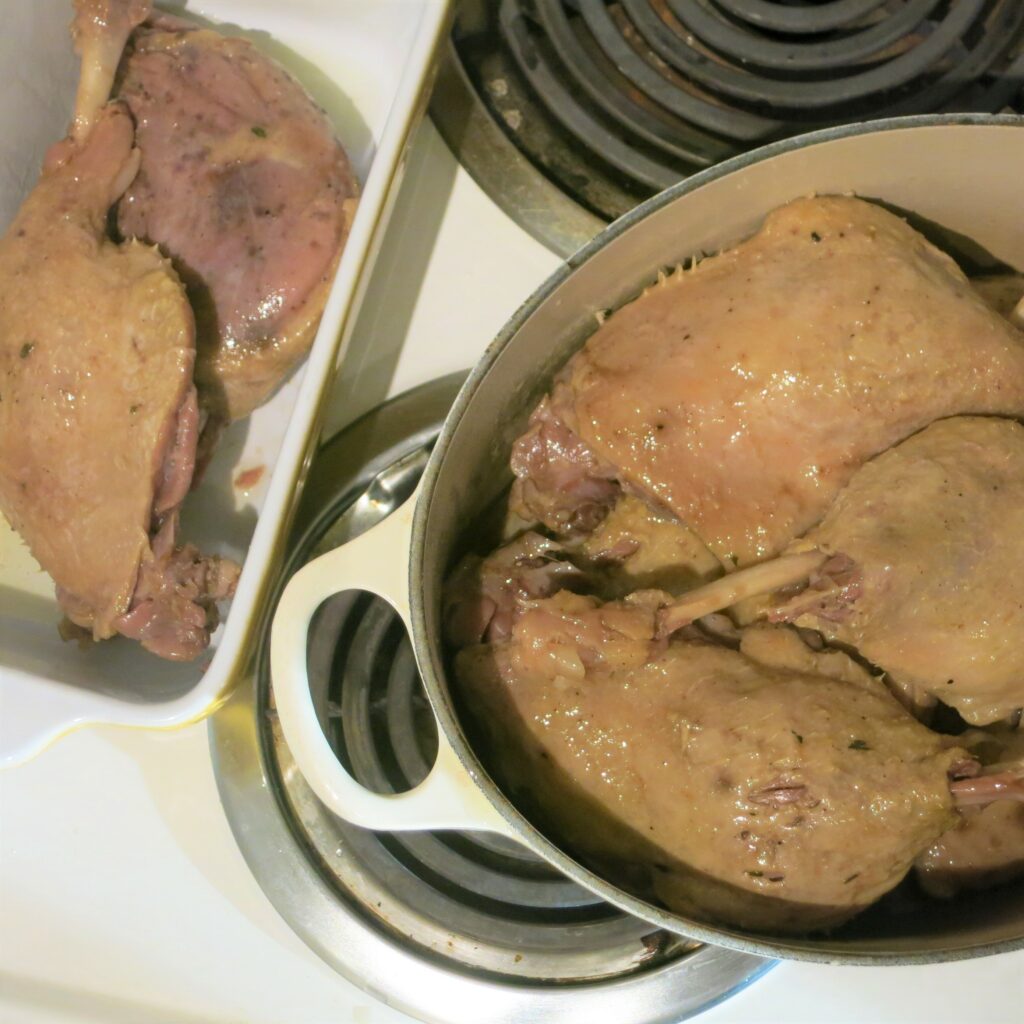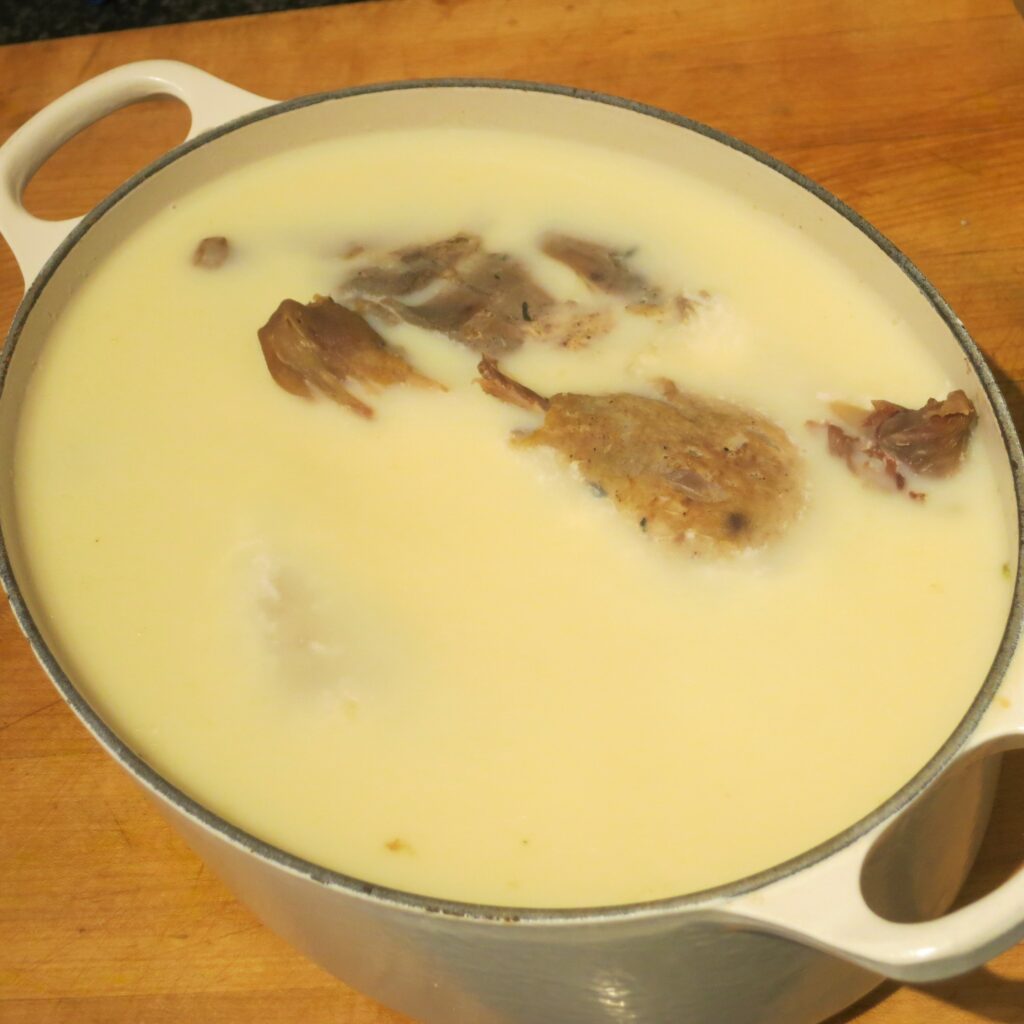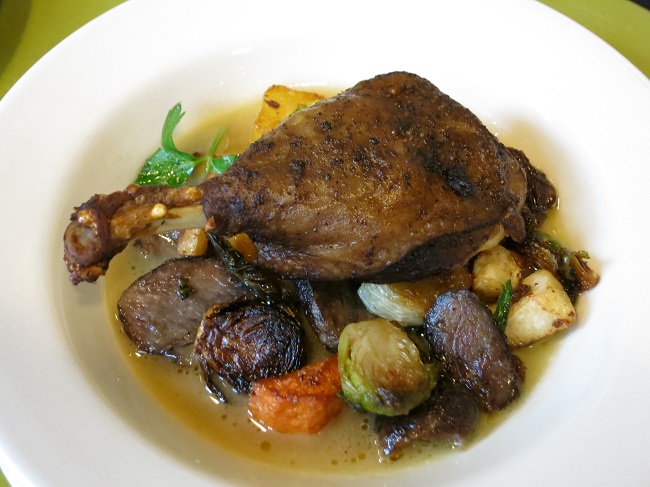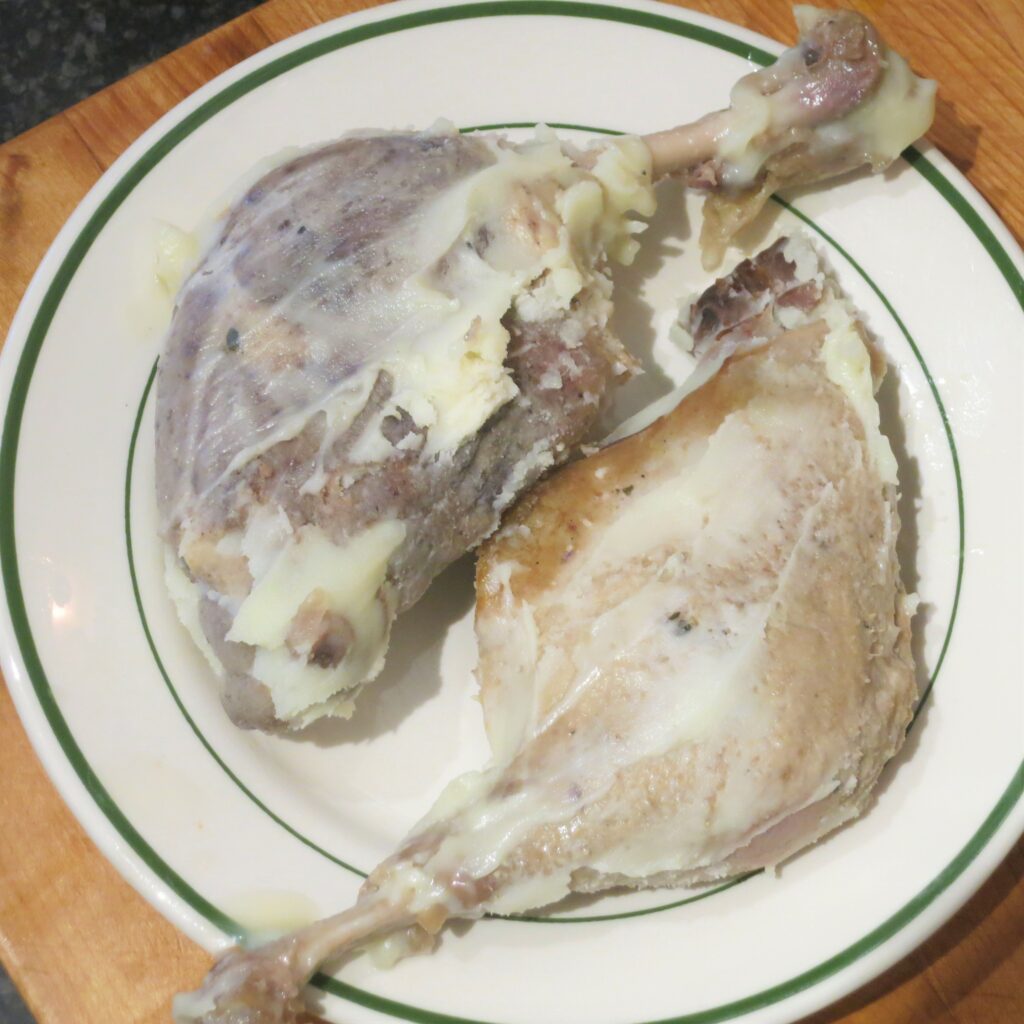
Confit de canard, or preserved duck, is an indispensable dish of southwestern France and a warm, comforting dish on a cold winter evening. Its origin lies in the culture of duck farming that has shaped the entire region, from the Pays Basque in far southwest, north to Gascony and east to the area around Toulouse. On my first visit to the southwest, it struck me as odd that so much of the land was dedicated to growing field corn, since corn figures very little in the local cuisine. Corn, it turns out, is the starting point for the raising of ducks for foie gras, and foie gras production is king here.
Confit developed from the thrifty farm ethos of whole animal eating. In foie gras duck terms, that means making use of the rest the large framed Moulard duck after the sumptuous liver has been removed. The thick, meaty breasts (or magrets) are usually seared on a plancha grill and served like a steak, or marinated with salt and spices then smoked, thinly sliced and enjoyed cold like best quality cured ham. The fat of the carcass is rendered for use in cooking, representing the the third pillar in the French pantheon of cooking fats (Butter in the north, olive oil in the southeast and duck or pork fat in the southwest).
All that’s left, including the legs, gizzards, neck and wings, are rubbed with salt, spices, garlic and herbs, the slowly cooked in duck fat until very tender. This preparation not only makes the meat very tasty, it also acts as as a method of preservation; covered in duck fat, confit will last for months in a cool larder or refrigerator and served as a invaluable source of protein during the long farm winters.
Breast, liver, fat and confit find there way into just about all of the region’s most famous dishes, including appetizers, salads, soups and main courses (no desserts as far as I know but who can say?).
This recipe for duck confit is roughly based on that offered by Paula Wolfert in her classic “The Cooking of South-West France”, with slight changes for my personal taste. Although it seems involved, the steps are simple in themselves and not particularly time consuming. And the result is definitely worth the effort. At home, I like to put down 10-12 legs in the fall so that we can eat them all winter long.
Duck Confit
Ingredients:
8 Moulard duck legs, about 5-6#
4 Tab kosher salt or fine sea salt
4 bay leaves, crumbled
3 sprigs thyme, stemmed and roughly chopped
1 T ground black pepper
1 t ground clove
1t ground cinnamon
4 cloves of garlic, peeled, halved and germ removed
Duck fat
- Prepare the legs: Trim any excess fat from the duck legs. Leave about 1/2″ fat from the point where it detaches from the meat. Render the fat, strain, cool and save. Wash the legs under cold water, pat dry
- Prepare the rub: In a mortar and pestle (or use a food processor or hand blender) combine the salt, bay leaves, thyme leaves, black pepper and ground cloves. Work to mix well and break up the bay leaves. Add the peeled garlic and work until a rough paste.
- Marinate the legs: Rub the rub evenly into the 8 duck legs on the flesh side only, not on the skin. Work the rub into the nooks and crannies. Place the legs into a large shallow dish in a single layer, cover tightly with plastic wrap and leave for 3 days in the refrigerator.
- Cook the legs: rinse the legs with cold water and pat dry. Arrange the legs in a heavy Dutch over or roasting pan. Add to the pan enough melted (but not boiling!) duck fat so that the legs are completely covered. Cover the pan and place in a 250 degree oven. Cook until completely tender, about 3-4 hours. The legs are done when a knife stuck into the deepest part of the meat slips out easily and the does not lift the leg.
- Storage: arrange the legs tighly in a crock or deep pan that will fit in your refrigerator. Strain the warm duck fat and remove any cooking liquid that has pooled at the bottom (note this cooking liquid, though salty, can be used as a flavor booster in soups and sauces). Pour the warm fat over the legs to cover completely. Cool in the refrigerator.
- To use: Remove the storage container from the refrigerator 30 minutes before using to soften the fat. Remove enough fat so that you can access as many legs as needed. Boil the fat, cool slightly then pour back into the storage container to reseal the remaining legs.
- To serve: there are many ways to cook duck confit but my favorite is to bake in a hot oven until hot through, then finish under the broiler until the skin is crispy (love that crispy skin!). Serve with French green lentils, simply boiled, drained and tossed with a little butter and parsley, or with potatoes roasted in duck fat. Miam Miam!
